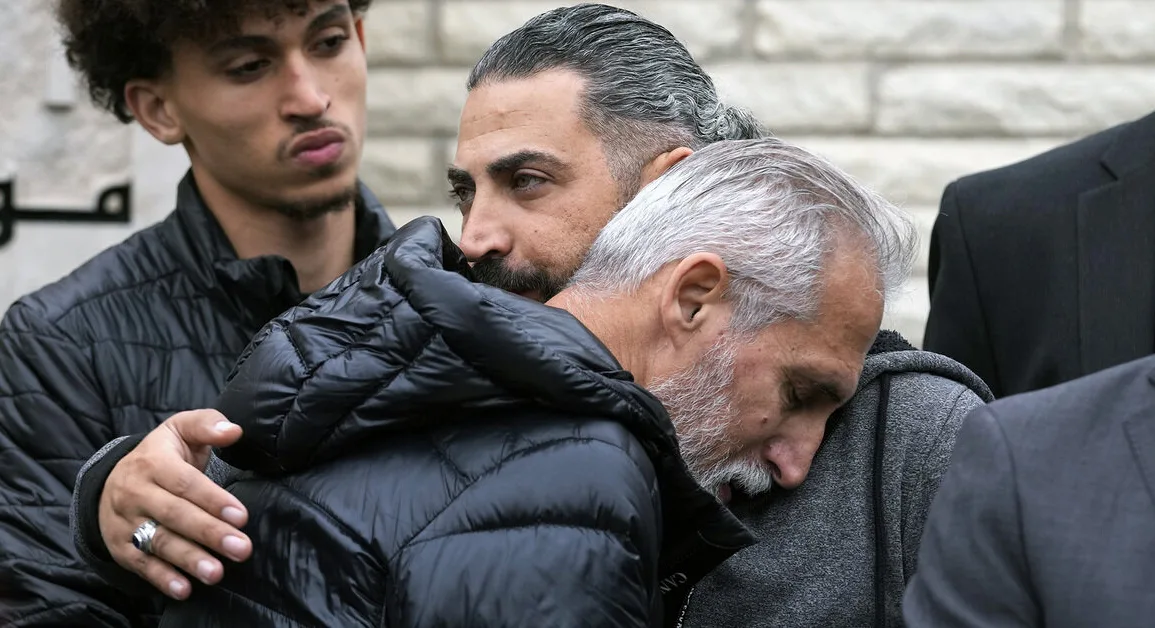This is The Marshall Project’s Closing Argument newsletter, a weekly deep dive into a key criminal justice issue. Want this delivered to your inbox? Subscribe to future newsletters here.
In televised remarks Thursday addressing the violence in Israel and the Palestinian territories, President Joe Biden lamented “the rise of antisemitism and Islamophobia right here in America.” He mentioned Wadea Al-Fayoume, a 6-year-old Palestinian-American who was fatally stabbed by a man who allegedly yelled “you Muslims must die,” as he attacked the boy and his mother — tenants in an apartment the man owned outside Chicago. Biden’s remarks came after some Muslim advocates criticized the administration’s rhetoric in support of Israel.
The same day that the president heard from those leaders, the FBI released national hate crime data for 2022 which found that incidents increased by 7% from the previous year. The number of incidents represents an all-time high, but that’s no surprise. FBI’s data shows hate crimes increased by nearly 50% between 2014 and 2022.
There’s no national data yet to determine if hate crimes have spiked since Hamas attacked Israel on Oct 7. and Israel began retaliating, but fears are running high in both Jewish and Muslim communities. FBI director Christopher Wray said earlier this week that the bureau is monitoring an increased number of threats against both groups, but officials did not provide numbers and said many threats have not been credible.
Many Muslims in the U.S. live with the memory of the intense Islamophobia that defined the post-9/11 era. FBI data shows a spike in anti-Arab and anti-Muslim hate crimes in 2001, followed by another spike beginning in 2016, which many people attributed to former President Donald Trump’s campaign rhetoric in that year’s presidential race and later, his administration’s ban on travel from seven majority-Muslim countries.
The number of hate crimes against Muslims has never returned to pre-9/11 levels. By 2011, a decade after the 9/11 attack, police departments recorded 162 anti-Muslim hate crimes across the U.S., more than five times the number prior to 2001.
Categorizing hate crimes in these instances can be complicated because the bias may be directed at a person’s religion or their apparent ethnicity — or both. Typically, these categories of identity are jumbled together in the public consciousness. For example, Islamophobia has also led to attacks on the Sikh community, often because attackers mistakenly confused them with Muslims. Those incidents are generally classified as anti-Muslim hate, and there’s no national data on how often this happens. The FBI did not track anti-Sikh hate crimes until 2015, three years after a gunman killed six people in a Sikh temple in Wisconsin.
In 2022, Black people were the most common target of hate crimes, accounting for 30% of the 11,296 incidents that police departments across the country documented, according to FBI data. Anti-Jewish hate crimes were the second-most common.
Hate crimes, like virtually every other facet of the criminal justice system, are defined and reported according to a patchwork of different state and federal laws, and the behaviors they apply to can vary dramatically. Generally, they are defined as crimes motivated by bias and animus toward a victim’s identity, including race, religion, and in some states sexual identity. But that’s not always enough to meet the classification. The Oregonian reported this week that because of Oregon’s strict definitions, a number of recent incidents that would likely have qualified as hate crimes in other jurisdictions were not reported as such. In one case that did not qualify as a hate crime, a dead raccoon was left on a city building along with a handwritten note containing racist language and “veiled threats” toward the city’s first and only Black councilman.
Hate crime reporting also relies heavily on subjective decisions by the police, so the sensitivity of individual departments and investigators affects the data. Several years ago, The Marshall Project found that Washington, D.C., had reported more gender and gender identity-based hate crimes than any other jurisdiction in the country and more than the next three highest cities combined. Police officials there viewed it not as proof that the city had an outsized problem, but that they were doing an especially good job screening for these offenses. In California, officials recently rolled out a program that allows the state to collect data on possible hate incidents not reported to police via a hotline.
It’s likely that most potential hate crimes are never even reported to police. A Marshall Project analysis of the U.S. Justice Department’s National Crime Victimization Survey shows just 48% of hate crime victims said they reported their experience to the police in 2022. Hate crime victims who said they were targeted for their religion or sexual orientation were the least likely to report to the police.
From 2010 to 2022, the most common reasons that hate crime victims cited for not going to the police were that they reported the incident to non-law enforcement authorities, like a security guard or school official, and that they believed the crime was too minor. Some victims also said they thought police would not consider the crime important enough and “wouldn’t want to be bothered or get involved,” the victimization survey shows.
All of that limits what we know about how much bias motivates crimes in the U.S., experts say. “If you were asking me how much hate crime there is in America, I would say ‘I don’t know, but it’s too much,’” said Alex Piquero, a criminology professor at the University of Miami who led the Bureau of Justice Statistics under the Biden Administration.
“We need to do a much better job at empowering people when they get victimized,” Piquero said. “To report it, and then seek whatever services that they may need.”


